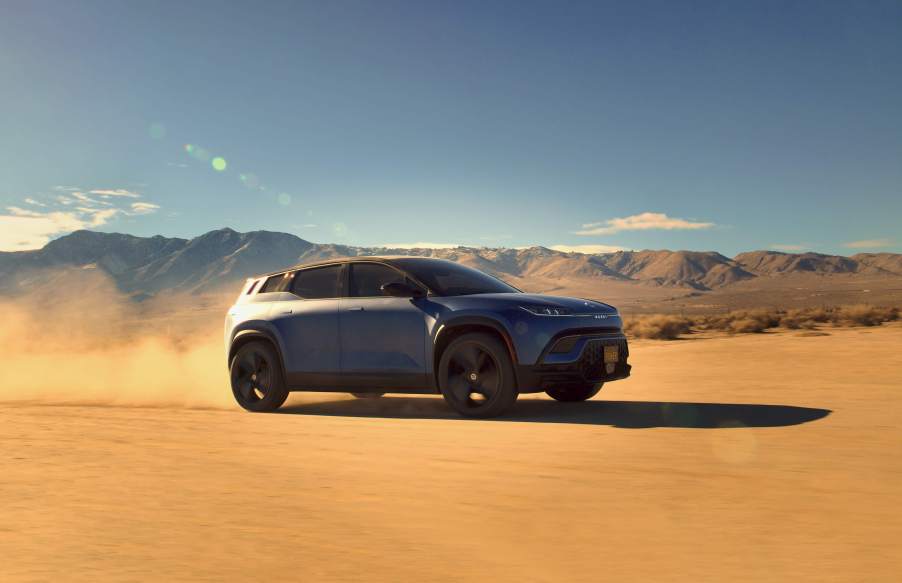
Only 1 Car Brand Offers Better Warranty Coverage Than Hyundai and Kia in 2023
One consideration when buying a new car is the manufacturer’s warranty. Better coverage can save significant amounts of money when problems arise. Hyundai, Kia, and Genesis are famous for their excellent warranties. But another brand — Fisker — provides even better car warranty coverage.
Hyundai, Kia, and Genesis offer similar warranties
Hyundai owns Kia and Genesis, so it’s fitting the three brands provide similar warranties.
They offer a bumper-to-bumper warranty of five years or 60,000 miles and powertrain protection for 10 years or 100,000 miles. But the coverage differs after that.
Kia’s distinctions lie in its roadside assistance (five years or 60,000 miles) and corrosion warranty (five years or 100,000 miles). Both are comparable to or shorter than many other automakers. Kia also provides trip interruption coverage when a warranty-covered breakdown happens more than 150 miles from home. In addition, the basic coverage is transferable to a second owner, but the powertrain coverage is not.
Genesis includes valet and diagnostic checks and scheduled maintenance for three years or 36,000 miles. The luxury brand also provides 24/7 roadside assistance for five years or unlimited miles.
Hyundai offers these additional protections on top of its bumper-to-bumper and powertrain coverage:
- Anti-perforation coverage for seven years or unlimited miles
- 24-hour roadside assistance for five years or unlimited miles
- Replacement parts and accessories limited warranty for one year or 12,000 miles
- Federal emissions defect and performance warranty for eight years or 80,000 miles
- California emissions control systems warranty for seven years or 70,000 miles
- Hybrid and electric vehicle battery warranty for 10 years or 100,000 miles
Fisker’s warranty is even better than Hyundai’s
EV maker Fisker builds upon industry-standard warranties by offering even more impressive protection. According to Fiskerati, the brand presented coverage for its Ocean electric crossover at the Mobile World Congress last year in Barcelona, Spain. Here’s an overview:
- Basic warranty: The cost of repairing or replacing all parts and the labor (including diagnosis) related to those materials is covered for six years or 60,000 miles, whichever comes first.
- Powertrain: The powertrain warranty period is for 10 years or 100,000 miles and covers defects in the electric drive unit and the drivetrain that occurs with normal use.
- Battery pack: Fisker’s coverage for its high-voltage battery includes all components and when the battery’s state of health is at or below 75% of the capacity for 10 years or 100,000 miles.
- Corrosion (perforation): Body panels affected by rust perforation or paint concerns are covered for 12 years or unlimited miles.
- Roadside assistance: This benefit spans six years or 60,000 miles. Assistance for non-warranty repairs is also available at the vehicle owner’s expense.
For service, the company offers at-home vehicle pick-up or Fisker Mobile Service through a partnership with Cox Automotive for customers who want mobile tech support. As an industry newcomer, Fisker designed its warranty to turn heads and build trust in the nascent brand. A complete list of warranty coverage will be included in a digital guide set to be released when Fisker production vehicles are officially available for purchase.
Fisker EVs are beginning to hit the road
Fisker’s warranty coverage is excellent but means only so much until consumers can get behind the wheel of the company’s two announced vehicles: the Fisker Pear and the Fisker Ocean.
We don’t know much about the Pear beyond its questionable name and that Fisker delayed this electric crossover’s production until 2025 due to battery supply issues. But the Ocean has garnered excitement since it was unveiled in 2019.
According to TopElectricSUV, customers have reserved 65,000 Ocean units as of May, and production began last November. Fisker delivered the first Ocean on May 5, but it will take time before the company fulfills all current orders. It plans to produce 32,000 to 36,000 units in 2023.


